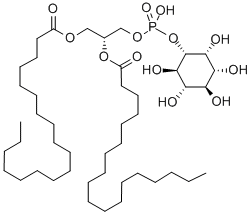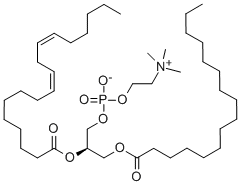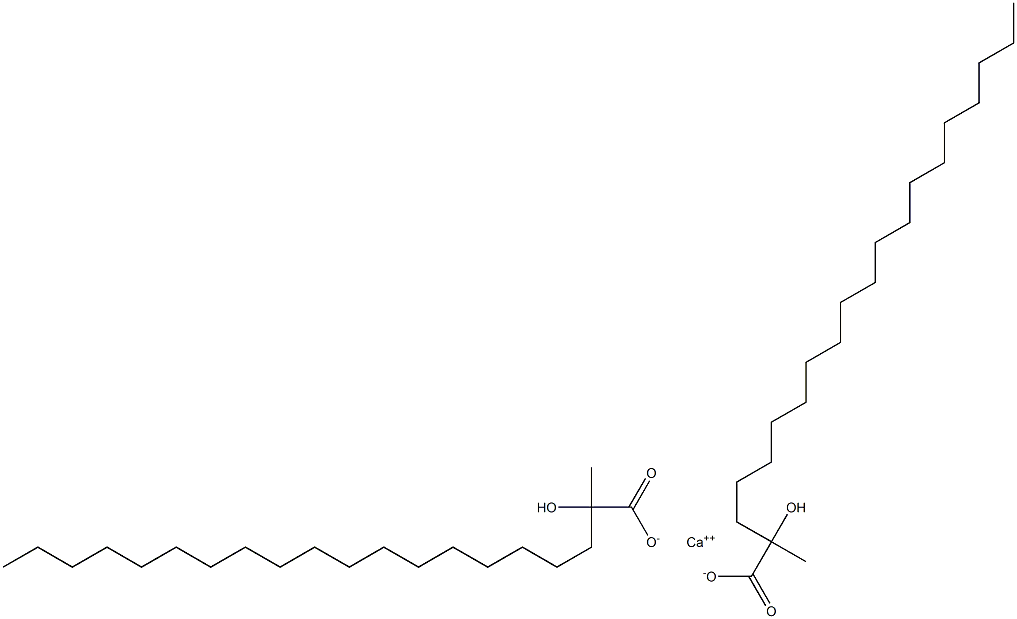PHOSPHOLIPIDS
- Molecular Weight: 0
What is PHOSPHOLIPIDS?
Description
Lipid substances, containing a phosphate group and one or more fatty acid residues, which are essential components of cell membranes. Hydrolysis yields fatty acids, phosphoric acid, and a base. They are amphoteric with a polar and a nonpolar region. Lecithins, cephalins, and related com_x0002_pounds are based on a glycerol backbone, with a phosphate group. In lecithin (phosphatidylcholine), R0 and Rv are fatty acid residues, usually one saturated and the other unsaturated. In the cephalins, ethanolamine (H2NCH2CH2OH) or serine replaces choline. They are used in the food industry as surfactants, emulsifiers, and antioxidants. In sphingomyelins, R is a fatty acid residue, usually tetracosanoic acid. They occur abundantly in brain tissues in association with cerebrosides, which are similar. On hydrolysis they split into choline, sphingosine, phosphoric acid, and a fatty acid.
Chemical properties
Phospholipids occur as white powders. They are sometimes supplied as clear, nearly colorless chloroform or methylene chloride solutions. Phosphatidylglycerols, phosphatidic acids, and phosphatidylserines are available as sodium or ammonium salts. Phospholipids can be purified from natural sources, such as eggs or soybeans, or can be chemically synthesized. Lecithins are partially purified mixtures of naturally occurring phospholipids.
The Uses of PHOSPHOLIPIDS
phospholipids (phosphatides) is used topically as a moisturizer and emollient because of their inherent compatibility with skin lipids. In general, natural phospholipids have a short-lived effect when topically applied, and are a primary material in the manufacture of liposomes. Phospholipids are complex fat substances that, together with protein, form the membrane of all living cells.
Production Methods
Phospholipids can be manufactured from naturally occurring materials, especially soybean and egg. The manufacturing process typically involves extraction, fractionation, and purification. They can also be synthesized chemically by reacting glycerol phosphocholine (PC), glycerol phosphoglycerol (PG), glycerol phosphoserine (PS), glycerol phosphoethanolamine (PE), or glycerol phosphoinositol (PI) with purified fatty acids.
General Description
Phospholipids are a class of lipids, which helps to maintain the structural definition of cells. These lipids are key components of cell and organelle membranes, blood lipoproteins and lung surfactants. Phospholipids plays an important role in signal transduction. It is also involved in the regulation of various cellular process including cell growth.
Agricultural Uses
Phospholipids are esters of glycerol and are similar in
structure to fats. However, unlike fats, they contain only
two fatty acids. The third ester linkage involves a
phosphate group which gives phospholipids two distinct
parts: a long non-polar tail and a polar substituted
phosphate head. Because of this dual nature,
phospholipids tend to form bi-layers in an aqueous
solution, with the tails in the interior and the polar heads
interfacing with the polar water molecules.
Phospholipids form a significant portion of cell
membranes and perform two important functions. They
protect the cell from extra cellular fluids, and allow
nutrients and other chemicals to enter the cell, while
letting the waste products leave the cell. Lecithin is an
example of phospholipids.
Pharmaceutical Applications
Phospholipids are amphiphilic molecules and are the major
component of most cell membranes.They are able to selfassociate
and form a variety of structures, including micelles and
liposomes.
Numerous pharmaceutical formulations use phospholipids to
form various types of liposomes, including unilamellar (one bilayer
membrane surrounding an aqueous chamber), multilamellar (two chamber), and multivesicular (numerous aqueous chambers joined
in a honeycomb-like arrangement) liposomes.Modified phospholipids
have been used to enhance the properties of the resulting
liposomes. The covalent attachment of polyethylene glycol (PEG) to
the phospholipid, or PEGylation, provides steric hindrance to the
surface of the liposomes, resulting in decreased uptake by the
reticuloendothelial system (RES), also known as the mononuclear
phagocyte system, and a prolonged circulation half-life following
intravenous administration; the so-called ‘stealth liposomes.’
Conjugation with antibodies produces immunoliposomes, which
are able to target specific cell types and deliver a payload of
encapsulated drug.
Phospholipids can be anionic, cationic, or neutral in charge.
Because of their amphiphilic nature, phospholipids will associate at
hydrophobic/hydrophilic interfaces. The charged lipids can be used
to provide electrostatic repulsion and physical stability to
suspended particles. Thus, they have been used to physically
stabilize emulsions and suspensions.Phospholipids have also
been used in formulations administered as lung surfactants, in
intravenous fat emulsions, and in oral solutions (e.g. Rapamune).
Safety
Generally, phospholipids have little or no acute toxicity (i.e. they are
well tolerated even when administered at doses in the g/kg
range).The clearance of most phospholipids occurs by wellknown
metabolic pathways.
Liposomes containing stearylamines (cationic liposomes) have
been found to induce cytotoxicity through apoptosis in the
macrophage-like cell line RA W2647 and inhibit the growth of
cells in vitro.In nine cancer-derived cell lines and one normal
cultured human cell line, stearylamine- and cardiolipin-containing
liposomes were toxic () at 200 μM liposomal lipid concentration
or less, whereas PG- and PS-containing liposomes were toxic in
the range 130–3000μM. Positively charged lipids such as
stearylamine can increase the toxicity of liposomes.These
studies reported an (IV) of 1.1 g/kg and 7.5 g/kg with and
without stearylamine, respectively.
The safety of phospholipids delivered by the intravenous route is
complicated by their tendency to form particles that are recognized
by macrophages of the RES. Uptake by the RES is dependent on
particle size and composition.
storage
Phospholipids are stable in the solid state if protected from oxygen, heat, and light. Chloroform or dichloromethane solutions are also stable. Both the solid-state and solution forms should be stored at -20°C. Liposomal phospholipids are known to degrade via oxidation and hydrolysis. To minimize oxidation, liposomes can be prepared under oxygen-free environments and antioxidants, such as butylated hydroxytoluene (BHT), can be added. To minimize hydrolysis, water can be removed from liposomes by lyophilization. In cases where liposomes are unstable to lyophilization, long-term storage at 2–8°C is recommended. The ester hydrolysis of phospholipids in liposomes typically follows a Vshaped curve, with the minimum at around pH 6.5.
Regulatory Status
Included in the FDA Inactive Ingredient Database (oral, otic, buccal, vaginal, topical, epidural, intravenous, intramuscular, and inhalation aerosol). A number of phospholipids such as DPPG and DOPC are present in approved products in Europe and the USA.
Properties of PHOSPHOLIPIDS
| Flash point: | 14 °C |
| storage temp. | -20°C |
Safety information for PHOSPHOLIPIDS
| Signal word | Danger |
| Pictogram(s) |
 Flame Flammables GHS02  Exclamation Mark Irritant GHS07  Health Hazard GHS08 |
| GHS Hazard Statements |
H225:Flammable liquids H315:Skin corrosion/irritation H319:Serious eye damage/eye irritation H336:Specific target organ toxicity,single exposure; Narcotic effects H351:Carcinogenicity H373:Specific target organ toxicity, repeated exposure |
| Precautionary Statement Codes |
P210:Keep away from heat/sparks/open flames/hot surfaces. — No smoking. P261:Avoid breathing dust/fume/gas/mist/vapours/spray. P281:Use personal protective equipment as required. P305+P351+P338:IF IN EYES: Rinse cautiously with water for several minutes. Remove contact lenses, if present and easy to do. Continuerinsing. |
Computed Descriptors for PHOSPHOLIPIDS
New Products
Tert-butyl bis(2-chloroethyl)carbamate 4-Methylphenylacetic acid N-Boc-D-alaninol N-BOC-D/L-ALANINOL 3-Morpholino-1-(4-nitrophenyl)-5,6-dihydropyridin- 2(1H)-one Furan-2,5-Dicarboxylic Acid Tropic acid 1,1’-CARBONYLDIIMIDAZOLE DIETHYL AMINOMALONATE HYDROCHLORIDE R-2-BENZYLOXY PROPIONIC ACID 1,1’-CARBONYLDI (1,2-4 TRIAZOLE) N-METHYL INDAZOLE-3-CARBOXYLIC ACID (2-Hydroxyphenyl)acetonitrile 4-Bromopyrazole 5-BROMO-2CYANO PYRIDINE 5,6-Dimethoxyindanone 5-broMo-2-chloro-N-cyclopentylpyriMidin-4-aMine 2-(Cyanocyclohexyl)acetic acid 4-methoxy-3,5-dinitropyridine 2-aminopropyl benzoate hydrochloride 1-(4-(aminomethyl)benzyl)urea hydrochloride diethyl 2-(2-((tertbutoxycarbonyl)amino) ethyl)malonate tert-butyl 4- (ureidomethyl)benzylcarbamate Ethyl-2-chloro((4-methoxyphenyl)hydrazono)acetateRelated products of tetrahydrofuran








You may like
-
 2033-24-1 98%View Details
2033-24-1 98%View Details
2033-24-1 -
 1975-50-4 98%View Details
1975-50-4 98%View Details
1975-50-4 -
 2-HYDROXY BENZYL ALCOHOL 98%View Details
2-HYDROXY BENZYL ALCOHOL 98%View Details
90-01-7 -
 2-Chloro-1,3-Bis(Dimethylamino)Trimethinium Hexafluorophosphate 221615-75-4 98%View Details
2-Chloro-1,3-Bis(Dimethylamino)Trimethinium Hexafluorophosphate 221615-75-4 98%View Details
221615-75-4 -
 61397-56-6 CIS BROMO BENZOATE 98%View Details
61397-56-6 CIS BROMO BENZOATE 98%View Details
61397-56-6 -
 14714-50-2 (2-Hydroxyphenyl)acetonitrile 98+View Details
14714-50-2 (2-Hydroxyphenyl)acetonitrile 98+View Details
14714-50-2 -
 118753-70-1 98+View Details
118753-70-1 98+View Details
118753-70-1 -
 733039-20-8 5-broMo-2-chloro-N-cyclopentylpyriMidin-4-aMine 98+View Details
733039-20-8 5-broMo-2-chloro-N-cyclopentylpyriMidin-4-aMine 98+View Details
733039-20-8